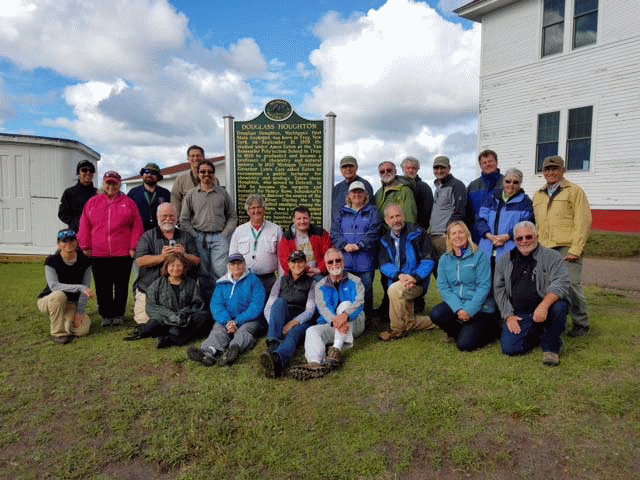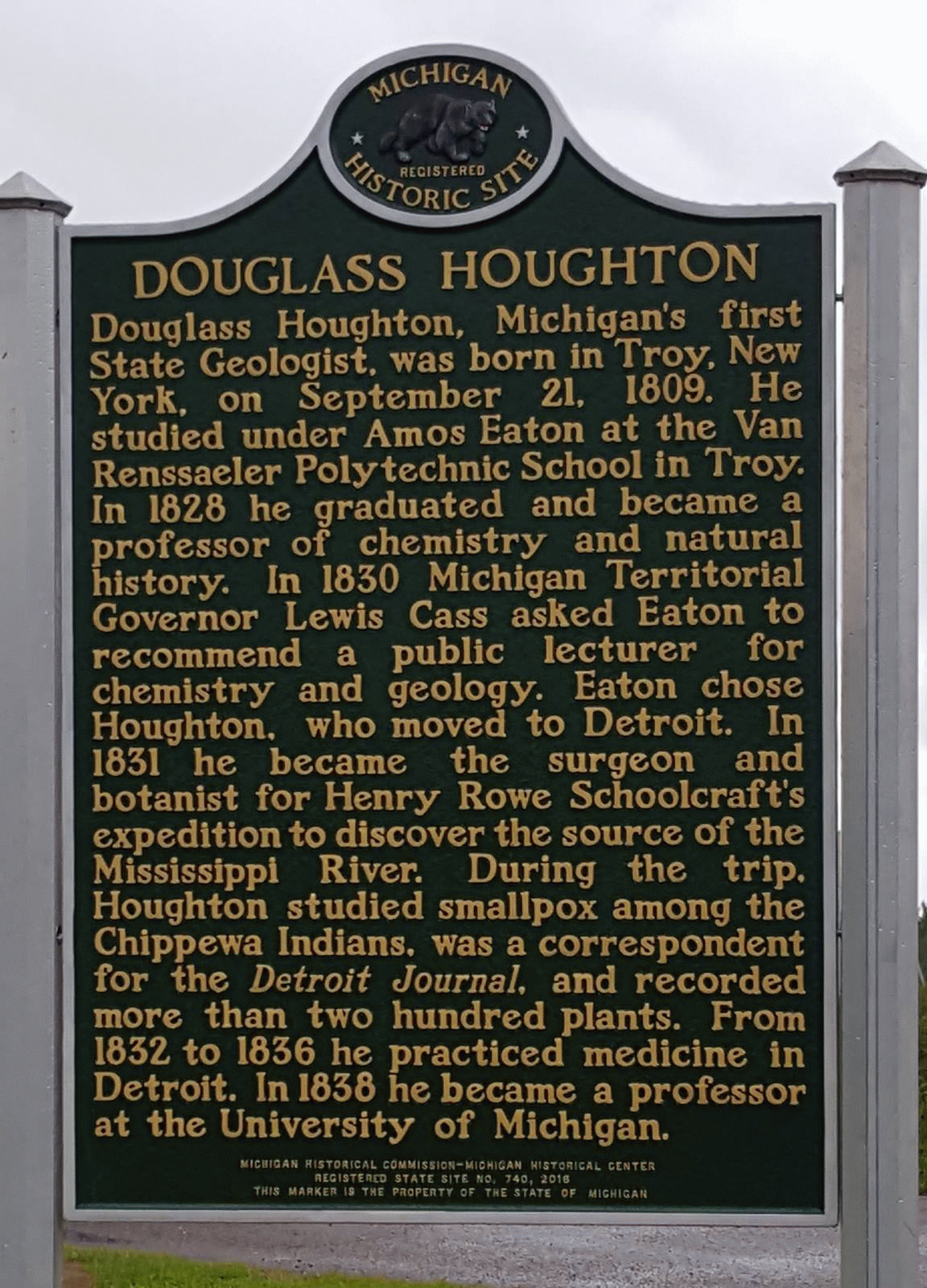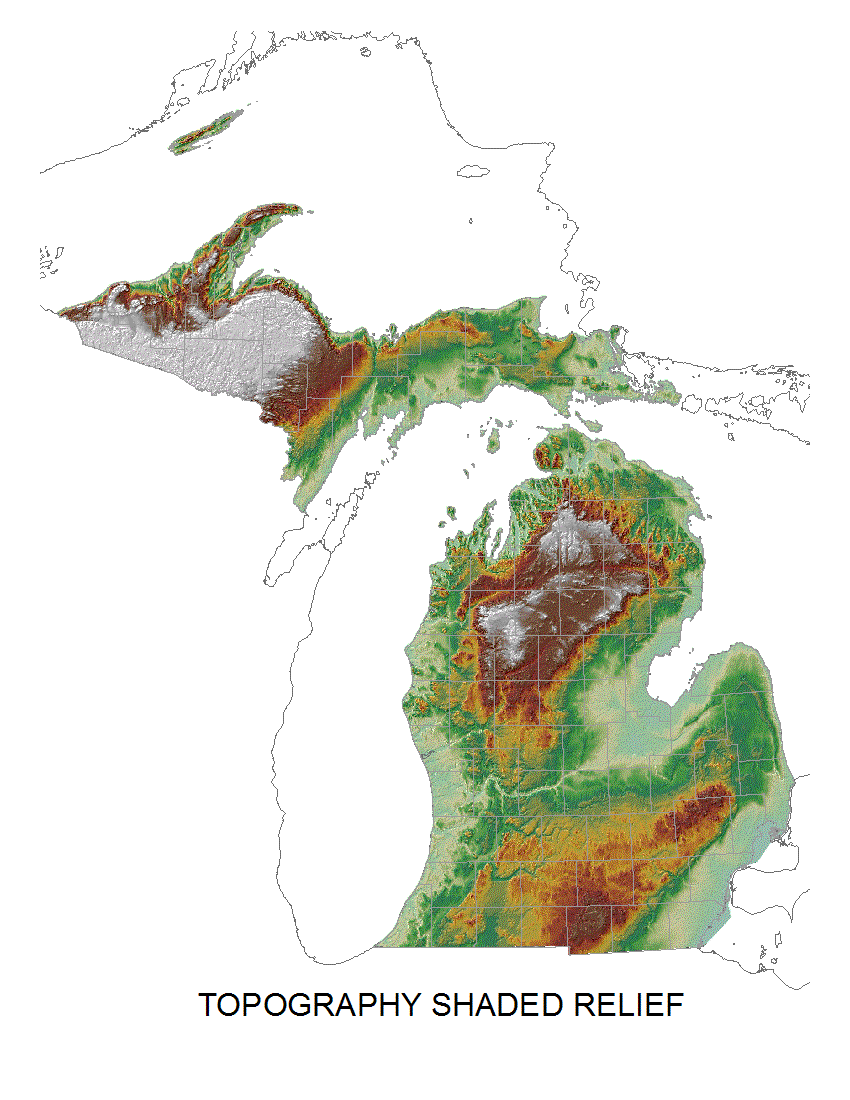

Follow Us on Facebook!
INTRODUCING THE 2024 - 2025 MBGS EXECUTIVE COMMITTEE MEMBERS
-
President: Andrea Munoz-Hernandez, Ph.D., GISP. Mich. Dept. of Environment, Great Lakes and Energy
-
Vice President: vacant
-
Secretary: John Yellich, Michigan Geological Survey
-
Treasurer : Peter Rose Michigan Department of Natural Resources
-
Business Manager: Peter Rose, Michigan Department of Natural Resources
-
Past President: Jennifer Trout, Michigan Geological Survey
-
Newsletter Editor: Arlene Anderson-Vincent, Blue Triton Brands
-
Webmaster: John Esch, Michigan Geological Survey
-
Interim Field Trip Directors: John Esch & Chris Christensen
MBGS has monthly meetings typically on the 2nd Wednesday
of each month from September - May
ACCEPTING APPLICATIONS FOR THE 2026 MBGS E.Z. MANOS MEMORIAL SCHOLARSHIP
Michigan Basin Geological Society will award two scholarships up to $500 each to students conducting graduate or undergraduate research in geology related to Michigan. The scholarships will be awarded at an upcoming MBGS meeting and the winner(s) will be notified In December. We hope recipients can attend a spring MBGS meeting to present their research topic. Candidates should complete and submit the MBGS scholarship application form by December 20, 2025 to John A. Yellich, MBGS Secretary, at jasty98@aol.com with subject Line: MBGS Scholarship 2026. Applications can be found on MBGS’s Scholarship Page
OTHER NEWS: MBGS HISTORICAL PUBLICATIONS ARE NOW AVAILABLE ON USB FLASH DRIVES (8GB).
MBGS Publications ‐ There are two (2) new publications available! See details on the Publications page
MBGS On-line Store - Shop for shirts, hats, bags and other items. Check it out at: http://www.cafepress.com/mbgs
MBGS MEMBERSHIP DUES
MBGS continues to strive to provide a platform for geologist and environmental professionals to connect and offer learning and field trip opportunities. For 2025-2026, our annual dues are $35. Student Membership is free. Email any one of our officers if you are a student and would like to be a member. We now offer the option to renew your professional membership via PayPal. Please refer to the renewal notices that are included in the newsletter. Student Membership is free.
Professional Membership Dues

Opportunity for Members: MBGS is seeking members who are interested in getting involved. We need a Vice President, Treasurer, and a Secretary for the 2025-2026 year. If you are interested in these opportunities, please reach out to any of the executive committee members.
Opportunity for Presenters: MBGS is seeking presenters for Michigan Basin geologically-related topics for our 2025-2026 membership meetings. If interested, please contact Andrea Muno-Hernandez at munozhernandeza@michigan.gov.
Next Meeting
Please join us for the Michigan Basin Geological Society’s membership meetings for the 2025-2026
MBGS Dinner Meeting Wed. December 17th, 2025
Social – 6-6:15 PM, Dinner - 6:15-7:00 PM
Presentation - 7:00 PM
RSVP’s required by December 10th, 2025
RSVP to Peter Rose @ delta13cpupik@gmail.com
Friends and family are welcome to join but space is limited.
Founders Brewing Company
235 Cesar E. Chavez Ave SW
Grand Rapids, MI 49503
Centennial Room
See meeting notice for parking instructions
Dinner Menu - Dirty Bastard BBQ
Pulled pork, pulled chicken, pasta salad, baked beans, pickles,
potato chips, red-cabbage slaw, and brioche buns. Featuring
house-made Dirty Bastard BBQ sauce.
Speaker: , Suzanne DeVries-Zimmerman, Associate Professor of Geological & Environmental Science, Hope College
Topic: Michigan’s Migrating Dunes
ABSTRACT: For over 20 years, the Hope College Coastal Research Group has focused on West Michigan’s dunes. Collectively, we have examined the timing and conditions under which the dunes have migrated in the past, including studying historical meteorological data along the coast to evaluate regional climate change and its implications for coastal dune systems. We are also monitoring how the dunes are moving now, especially in response to large wind events. To accomplish this, we have developed a variety of techniques to monitor sand movement and surface change in local dune complexes. Other projects include conducting a longitudinal study on the changing ecohydrology of an interdunal wetland in response to changing Lake Michigan-Huron levels, assessing the rates of carbon sequestration and greenhouse gas emissions from interdunal wetlands, and understanding how vegetation populations in the dunes change over time and the factors driving those changes.
BIOGRAPHY: Suzanne DeVries-Zimmerman has been teaching in the Department of Geological and Environmental Sciences at Hope College since 1999. Prior to employment at Hope, she spent over 10 years working for environmental consulting firms in New Jersey and Michigan, specializing in Superfund (Comprehensive Environmental Response, Compensation, and Liability Act), Resource Conservation and Recovery Act (RCRA), and Clean Water Act projects, including wetland delineations and environmental/ecological assessments. Having spent years dressed in personal protective equipment working on toxic waste sites and hazardous waste landfills in several states, she now relishes regularly going to the beach and dunes with students and colleagues under the guise of
conducting scientific research.
Suzanne is part of the Hope College Dune Research Group, an interdisciplinary team studying multiple aspects of Lake Michigan’s
coastal dunes. Suzanne focuses on the relationships between coastal dune dynamics and the ecological systems of the dunes. Recently, she initiated a long-term ecohydrological study of an interdunal wetland or slack near Saugatuck, Michigan, in the Saugatuck Harbor Natural Area. The project’s goal is to investigate the factors influencing the wetlands and the ecological
communities there with an eye towards managing these areas for future generations. In addition, she and her colleagues are working with researchers from Liverpool Hope University, Liverpool, England, and the Centre for Ecology and Hydrology, Bangor, Wales, on collaborative projects involving dune dynamics, including the ecological systems on these dunes, and dune management along the Welsh and Lake Michigan coasts.
Go to Presentations page for recent MBGS presentations as PDF file
Below are links to recordings of the past (3) MBGS meetings
A 3-D Bedrock Geologic and Hydrostratigraphic Model of Southern Ontario
Date: April 13th, 2022
Meeting Recording:
Below are the 2 original presentations that Terry presented:
A Revised 3-D Geologic Model of the Bedrock of Southern Ontario and Progress on Development of a 3-D Hydrostratigraphic Model
https://www.youtube.com/watch?v=H0VZLNMxpKU&list=PLdapv5BeduhV3JoX6F4giIHGRgYI6Bkag&index=2
A 3-D Bedrock Hydrostratigraphic Model of Southern Ontario
https://www.youtube.com/watch?v=GgJmOHYZtak&list=PLdapv5BeduhXJZedclmAYiccOCcSuYsMW&index=20
Articles referenced in the presentation:
A Hydrostratigraphic Framework for the Paleozoic Bedrock of Southern Ontario
https://journals.lib.unb.ca/index.php/GC/article/view/31465/1882527052
A Three-Dimensional Geological Model of the Paleozoic Bedrock of Southern Ontario, Groundwater Resources Study 19 Geological Survey of Canada, Open File 8618
http://www.geologyontario.mndm.gov.on.ca/mndmfiles/pub/data/imaging/GRS019//GRS019_Report.pdf
Lake Michigan Shorelines, Catastrophic Failure or Stable, That is the Question, Date: Jan 12, 2022
Meeting Recording:
https://us06web.zoom.us/rec/share/-Gr3efOHXLqk_SSFJqsMG9VpAk8sbQc9WWZDroawji1DYfjnD84IfzTSsc3XYh78.zXGywtGcpy1j0c_B
Grand Canyon MBGS Field Excursions, Date: Feb 9, 2022
Meeting Recording:
Geology in the News
New Survey Publication – An Updated Bibliography of Michigan Geology
John Yellich and Peter Voice, Western Michigan University Department of Geological Sciences and Michigan Geological Survey
The Michigan Geological Survey is proud to announce a new publication: Michigan Geology: A Bibliography, the second volume in the Michigan Geological Survey Data Compilation Series. This updated compilation lists over 7,700 references from all known Michigan sources, including industry, professional associations and universities and includes publications from 1818 to present. This report documents 200 years of Geological Research in Michigan. The Bibliography is sorted into four general categories – Precambrian, Basin, Quaternary, and Other.
This updated version of the bibliography also includes a short section on Michigan Stratigraphic Nomenclature, as well as brief discussion of historical trends in publication frequency in Michigan.
The report is free to download at the Michigan Geological Survey’s webpage: https://wmich.edu/geologysurvey/research/publications.

DOUGLASS HOUGHTON MEMORIAL
Douglass Houghton, Michigan’s first State Geologist, was honored on September 10, 2016 by
the placement of a State of Michigan Historical Marker commemorating his accomplishments. The
effort was led by Arlene Anderson‐Vincent, members of the Michigan Basin Geological Society,
Keweenaw County Historical Society and faculty at Western Michigan University and Michigan
Technological University. The dedication was incorporated into a MBGS field excursion led by
Professor Ted Bornhorst of Michigan Technological University and Lawrence Molloy, President of the Keweenaw County Historical Society. The two led a field excursion that covered the geology and history of sites from Houghton to Copper Harbor and wove a tale of the rise and fall of mining in the copper range. The field excursion included the dedication of the marker, which is located in Eagle River, Michigan at the Keweenaw County Historical Museum. The dedication had many speakers and a special appearance from Kyle Bagnall, who portrayed Bela Hubbard who told the story of Douglass Houghton’s 1840 expedition along Lake Superior. Douglass Houghton died in 1845 when the boat carrying himself and his crew capsized during a storm on Lake Superior near Eagle River.


Michigan Basin Geological Society




The Michigan Basin Geological Society (MBGS) was founded in 1936 as an affiliated non-profit organization of the American Association of Petroleum Geologists (AAPG) to provide a forum for the exchange of ideas relating to the field of petroleum geology through field excursions and meetings.
Throughout the years, the role of the society has changed, and both meetings and field excursions now address a wide range of topics pertaining to the study of geology of Michigan and the great lakes area, and is open to anyone interested in geology.
MBGS has monthly meetings typically on the second Wednesday of each month from September through May. These meeting consist of a lecture on a wide variety of Michigan geology related topics. The meetings are open to all. The Executive Committee Officers meet prior to the meeting to discuss Society issues and is open to anyone interested in attending. The society has 1-3 geological field trips per year.
MBGS members are geologists, work in a geology related field, or are a geology student or hobbyist. The Society is dedicated to the advancement of the science of geology and related fields, disseminating knowledge of geology or related fields for the benefit of its members, and promoting the education of geology in Michigan. Annual dues are $35 per person and $10 per student.
Upcoming Events
December 4, 2025, AIPG Michigan Section Meeting, Ann Arbor
December 17th MBGS Dinner Meeting, Founders Brewing Co., Grand Rapids
Janurary 14, 2026, MBGS Membership Meeting, Jane Hearon (USGS) virtual presentation on geologic hydrogen
June 16-17, 2006 AIPG Michigan Section 15th Annual Environmental Risk Management Workshop, RAM Center, Roscommon, Mi
EGLE Calendar of Training and Workshops
https://www.michigan.gov/egle/0,9429,7-135-3308_3333---,00.html
Michigan State University, College of Natural Science, Department of Earth and Environmental Science,
Events https://ees.natsci.msu.edu/events/
Michigan Tech – Geoseminars ‐ http://pages.mtu.edu/~raman/SilverI/Geoseminar/Welcome.html
University of Michigan Earth and Environmental Science
Events https://lsa.umich.edu/earth
Western Michigan University, Geological and Environmental Sciences
Events https://wmich.edu/geology/events

